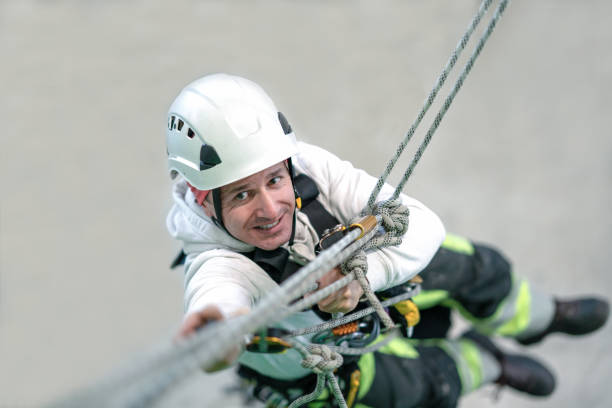Safety has become a defining concern in modern healthcare. Whether in hospitals, laboratories, or care facilities, staff are increasingly exposed to risks that go beyond medical challenges. From working at height in maintenance areas to handling complex building infrastructure, safety cannot be left to chance. The importance of structured skills development, such as an IRATA rope access course, has gained attention for its role in shaping safer, more resilient work environments.
Understanding Specialist Access Training
Specialist access training goes beyond traditional health and safety inductions. It equips staff and contractors with advanced skills to safely reach and operate in difficult or restricted areas. In healthcare, this could mean accessing high ceilings in surgical theatres, carrying out repairs in air filtration systems, or managing large external facades of hospitals. These tasks require precision, control, and a strong understanding of risk management.
By applying structured training methods, organisations reduce the likelihood of accidents, ensure compliance with safety standards, and protect both staff and patients from avoidable disruptions.
Why Healthcare Facilities Need Safer Access Methods
Healthcare environments are unique because safety lapses can have a direct impact on patient well-being. A poorly managed repair or unsafe maintenance activity can introduce risks such as dust contamination in surgical areas or equipment failure in critical care units. Specialist access training helps mitigate these issues by:
- Preparing workers to handle challenging access situations with minimal risk
- Ensuring proper use of safety equipment in line with industry standards
- Promoting awareness of the consequences of unsafe practices in medical settings
Healthcare facilities operate around the clock. As such, any maintenance or structural intervention must be completed quickly, safely, and without compromising care delivery.
Skills Gained Through Access Training
The value of specialist training lies in the skills it instils. Participants learn how to plan tasks in confined or elevated spaces, secure themselves and their tools, and apply rescue techniques should an emergency occur. They also gain confidence in identifying hazards before they escalate.
For healthcare teams, this means that the work of engineers, cleaners, or contractors can be integrated seamlessly without disrupting patient services. The training is not just about physical technique but also about fostering a culture of safety awareness that benefits the entire organisation.
Building a Culture of Accountability
Healthcare institutions rely on large, interconnected teams. From doctors and nurses to maintenance staff and administrators, everyone has a role in protecting safety. Specialist access training strengthens accountability by making individuals aware of the risks they face and the steps they can take to control them.
This culture extends beyond compliance. When staff know that their workplace invests in training, they are more likely to feel valued and motivated. For patients and their families, it reinforces trust that the environment is not only clinically secure but also physically safe.
Supporting Long-Term Efficiency
Investing in specialist training is not just a safety measure; it is also a strategic decision. Safer work environments reduce the costs associated with accidents, downtime, and emergency repairs. In healthcare, where budgets are often under pressure, this efficiency can make a significant difference.
Well-trained teams complete tasks faster, with fewer errors, and with greater consistency. This allows facilities to focus on delivering quality care while maintaining infrastructure to a high standard. Over time, this balance of safety and efficiency strengthens the reputation of healthcare institutions.
The Future of Safer Healthcare Environments
As healthcare facilities grow more complex, the demand for advanced safety solutions will continue to rise. Specialist access training will play a crucial role in meeting this demand. By embedding safe practices into everyday operations, healthcare organisations can adapt to future challenges with resilience.
The long-term vision is clear: safer environments for workers lead to safer outcomes for patients. Training is not a one-off activity but an ongoing commitment to excellence.
Conclusion
Healthcare is an environment where lives depend on precision, care, and safety. Creating safer workspaces goes beyond medical protocols; it requires investment in training that prepares staff for physical and structural risks. By adopting specialist access training, supported by approaches such as an irata rope access course, organisations can protect their teams, enhance efficiency, and build trust with the communities they serve.
A safer healthcare environment is not achieved overnight, but through consistent effort and professional training, it becomes a lasting reality that benefits everyone.





